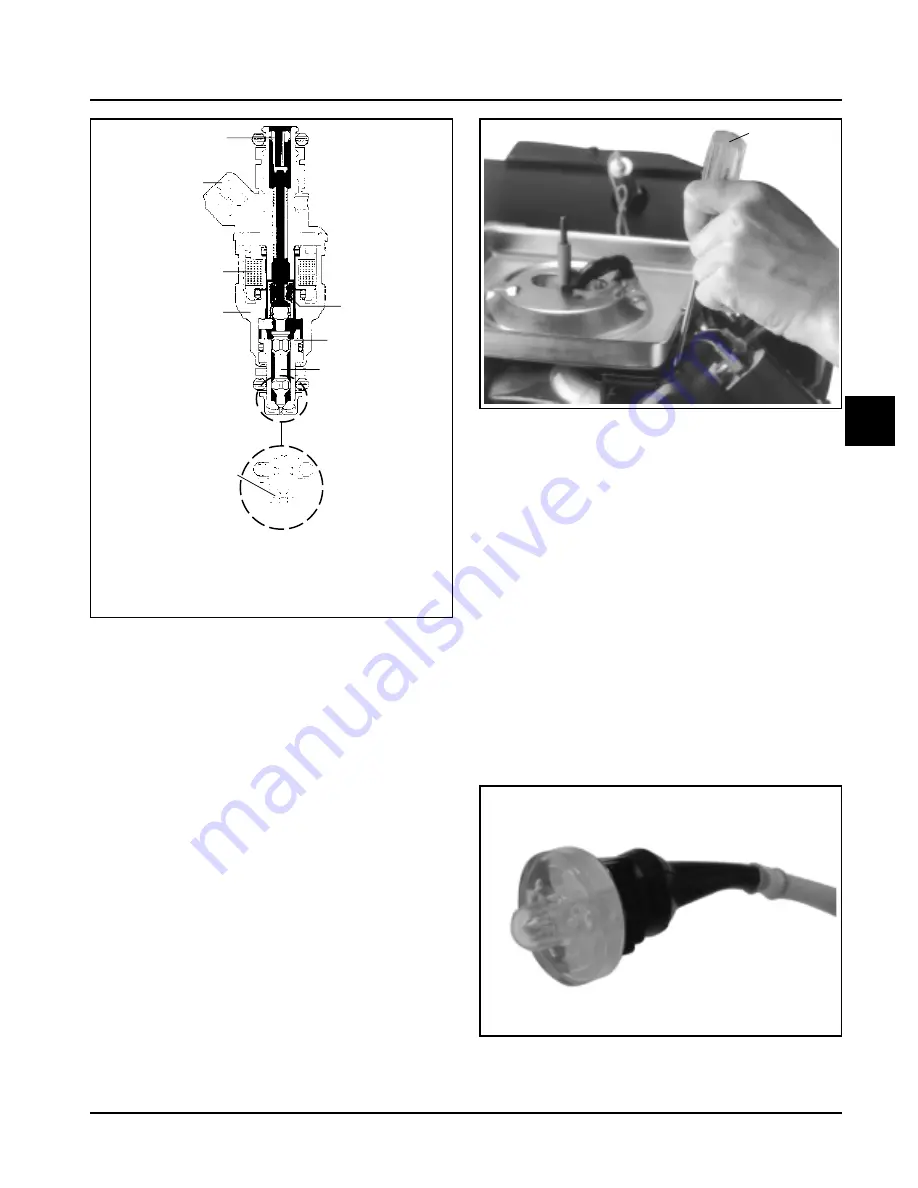
5B.13
Section 5B
EFI Fuel System
5B
Figure 5B-15. Checking Injectors.
3. Disconnect the electrical connector from an
injector and listen for a change in idle performance
(only running on one cylinder) or a change in
injector noise or vibration.
If an injector is not operating, it can indicate either a
bad injector, or a wiring/electrical connection problem.
Check as follows:
NOTE:
Do not apply voltage to the fuel injector(s).
Excessive voltage will burn out the injector(s).
Do not ground the injector(s) with the ignition
“on.” Injector(s) will open/turn on if the relay
is energized.
1. Disconnect the electrical connector from both
injectors. Plug a 12 volt test light (SPX Part No.
KO3217-6) in one connector.
Figure 5B-14. Fuel Injector Details.
The injector is opened and closed once for each
crankshaft revolution, however only one-half the total
amount of fuel needed for one firing is injected during
each opening. The amount of fuel injected is controlled
by the ECU and determined by the length of time the
valve needle is held open, also referred to as the
“injection duration” or “pulse width”. It may vary in length
from 1.5-8 milliseconds depending on the speed and
load requirements of the engine.
Service
Injector problems typically fall into three general
categories: electrical, dirty/clogged, or leakage. An
electrical problem usually causes one or both of the
injectors to stop functioning. Several methods may be
used to check if the injectors are operating.
1. With the engine running at idle, feel for operational
vibration, indicating that they are opening and
closing.
2. When temperatures prohibit touching, listen for a
buzzing or clicking sound with a screwdriver or
mechanic’s stethoscope (see Figure 5B-15).
1. Filter strainer in
fuel supply
2. Electrical connection
3. Solenoid winding
Multi-Orifice
Director Plate With
Calibrated Opening
4. Valve housing
5. Armature
6. Valve body
7. Valve needle
1
2
3
4
5
6
7
Listen Here
Figure 5B-16. Volt Test Light.
Not For Resale
www.SmallEngineDiscount.com






























